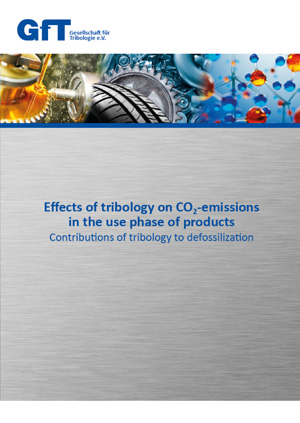Contributions of tribology to defossilization
 The growth in the human population and its prosperity have significant impacts for our resource consumption extracted from nature.
The growth in the human population and its prosperity have significant impacts for our resource consumption extracted from nature.
This is where the offerings of tribology come into play through durability (resource efficiency and conservation) and friction reduction (energy efficiency).
About this study
The third GfT study illuminates calculated CO2 and monetary savings from avoided emissions, or so-called Scope 4, to which low-carbon tribology can significantly contribute. Efficiency is the key contribution of lubrication sciences and tribology for mitigation of climate change. Friction reduction and longevity can help avoid greenhouse gas emissions in the use phase or Scope 3 downstream.
Friction produced from any interacting surfaces in motion wastes energy. It is apparent that energy not consumed downstream does not need to be produced upstream. The nuisance of wear generates waste and fuels material hunger, further straining limited resources. Any resource consumed has an embedded carbon footprint. The proper application of tribology, or the careful selection of lubricated surfaces to reduce the amount of friction, can be utilized to save CO2 without losing functional values in use. Subsequently, this reduction would proportionally reduce wear on the surfaces involved – allowing for increased longevity of the products and goods involved. Taking both together, friction reduction and longevity help to limit or reduce CO2 emissions by getting out more from the same amount of resources and energy.
The third GfT study names selected solution approaches, estimates the CO2 values of selected, tribological solutions and details concrete working axes based on available technologies. Most of the figures refer to the year 2019 because it is considered the last “normal” business year before the Covid19 pandemic.
Keywords: sustainable lubricants, avoided emissions, scope 4, friction reduction, longevity, CO2, greenhouse gases, sustainability, tribology, resource, monetary value carbon allowances.
Full version of study: English version
Please find here the German version.

